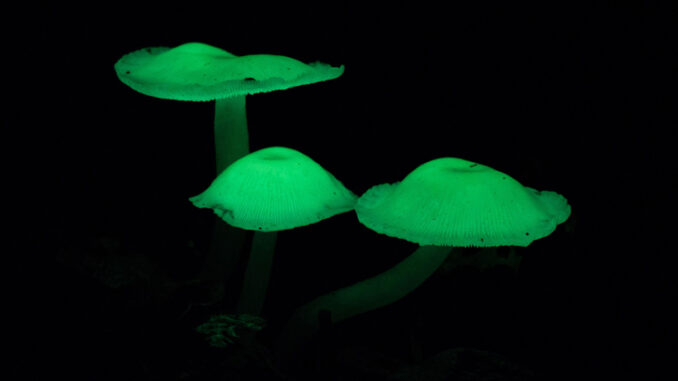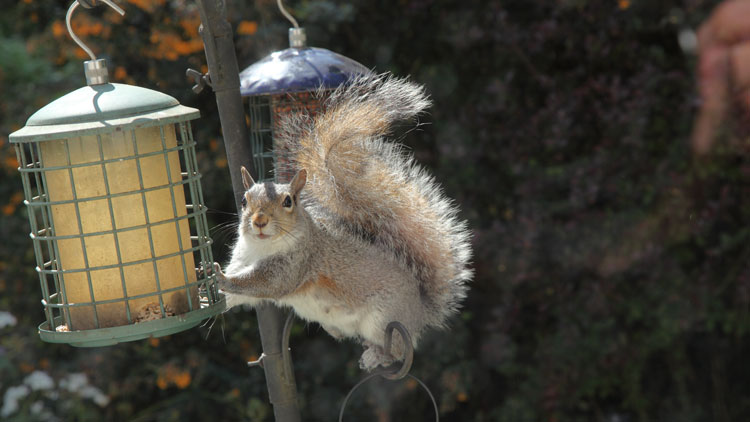
Did you know that there are some organisms that produce their own light? They light up in the dark like glow sticks. They are bioluminescent. Bioluminescence is a chemical reaction in a living thing. There are several types of organisms that can glow on their own and 80% of them live in the ocean. Bioluminescent organisms found in the deepest parts of the ocean have adapted to environments without light. The anglerfish uses bioluminescence as a tool to find food. Light comes from a glowing sac of bacteria at the end of an extension from its forehead. It uses this fishing rod-like adaptation to lure its prey out of the dark.
Bioluminescence happens when three substances come together. A substance called luciferase brings oxygen and another chemical called luciferin together. When the oxygen combines with the luciferin, it releases light. Some species of mushrooms are bioluminescent. These unique mushrooms glow in dark forests. The glowing mushrooms grow on decaying wood. They produce a green light that attracts insects. The insects carry parts of the mushroom to other parts of the environment. Bioluminescence helps the mushrooms reproduce! Bioluminescence can also be used by some organisms to attract mates or to warn predators to stay away. Deep in the ocean, some types of jellyfish use bioluminescence to defend themselves against predators. Fireflies and glowworms use bioluminescence by lighting up at night to attract mates. Scientists are learning more about bioluminescent organisms. Through their research, they are discovering ways to produce natural light.
What Can You Do? Read more about how researchers are using information from bioluminescent organisms to create light in other living things.
Photo Credit: Adam Major/Alamy Stock Photo



